Information & Resources to support older adults
with blindness or Low Vision

The Aging & Vision Loss National Coalition (AVLNC), a division of VisionServe Alliance, provides information and toolkits to help health care professionals better understand and help older people who are blind or visually impaired.
A National Problem
- Nearly half of all people aged 65+ in the United States already have at least one of the following eye conditions: Glaucoma, Diabetic Retinopathy, Macular Degeneration or Cataracts.
- In the past five years, longitudinal studies have shown that 60% of adults aged 65+ are living with significant vision loss.
- According to the National Health Survey, only a small percent of these individuals – less than 5% – receive vision rehabilitation services.
AVLNC Service Provider Toolkit
- Identifies the multiple impacts of vision loss on every aspect of providing services to older adults.
- Helps the older person see improved outcomes when vision loss is identified and accommodations are included in treatment, whether it be:
- in home health, residential services, hospital, and hospital discharge planning, occupational or physical therapy, recreation, mental health services, retirement planning, insurance, legal/guardianship, and all manner of multi-faceted services.
- Facilitates best practices among all who work with older adults with a functional assessment leading to individual service/treatment plans leading to maximum quality of life.
- Click to access the toolkit!

The Big Data Report Project
Access the only studies providing comprehensive descriptions of older people with vision impairment at the state and county levels in one document.
- Provides state-level data on the prevalence of blindness and low vision among people aged 65 years and older for many states with a goal to release reports for all US States.
- Includes the prevalence and types of chronic conditions, QOL, disability, and social determinants of health measures among older people, including those with vision loss.
- Includes data sets from the Behavioral Risk Factor Surveillance System (BRFSS) and the American Community Survey (ACS).
Learn more about the Big Data Project at:
visionservealliance.org/big-data-insights
Added Professional Resources:
Professional Resources: A Guide to Helping People Who Are Blind or Low Vision – VisionAware
Information on eye conditions, including age-related eye diseases, such as glaucoma, macular degeneration, and diabetic retinopathy are available at:
Age-Related Eye Diseases – What to Know and What You Can Do
Eye Conditions and Diseases | National Eye Institute (nih.gov)
Understanding Vision Loss:
Signs and Symptoms of Vision Problems – VisionAware
What Is Legal Blindness? – VisionAware
What Is Low Vision? – VisionAware
Vision Rehabilitation Services – VisionAware
For people facing vision loss and their family members:
Time To Be Bold – Independent living for older adults with vision impairment
This program connects older adults with online resources, copy strategies, and a hotline to call for support. Visit: https://timetobebold.org/
Getting Started 2020: A Guide for People New to Vision Loss – VisionAware
What Family Members Need to Know about Vision Loss and Its Impact – VisionAware
Resource List for Caregivers of Individuals with Vision Loss – VisionAware
Vision Simulation Video – VisionAware
VisionServe Alliance
Innovate. Lead. Collaborate.

